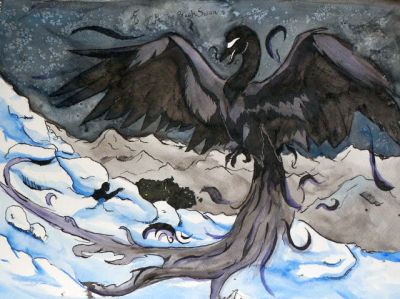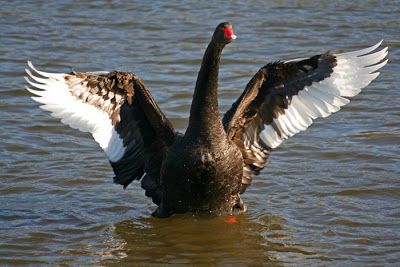AugureyeExpress April 16 2014
 It is a stormy night sometime in the winter of 1694 off the poorly charted western shore ofAustralia. The Dutch trading vessel Ridderschap Van Holland is foundering in the heavy swells. She is the flagship of the Dutch trading fleet and had sailed from Cape of Good Hope on February 5th with 300 crew and two passengers; they never arrived and were presumed lost at sea. Two years later the Dutch sailing Captain Willem de Vlamingh went searching for survivors with an expedition of three ships. The mission was a failure as no survivors or clues were ever discovered. On the return trip the expedition charted the western shores of Australia thereby improving navigation on the Indian ocean route to the Dutch east Indies. On January 10th of 1697 de Vlamingh ventured up the swan river; they were the first Europeans to ever do so. He named it Zwaanernenriver, which is Dutch for Swan River….after seeing huge numbers of Black Swans, which until that day were considered an impossibility since all swans are white.
It is a stormy night sometime in the winter of 1694 off the poorly charted western shore ofAustralia. The Dutch trading vessel Ridderschap Van Holland is foundering in the heavy swells. She is the flagship of the Dutch trading fleet and had sailed from Cape of Good Hope on February 5th with 300 crew and two passengers; they never arrived and were presumed lost at sea. Two years later the Dutch sailing Captain Willem de Vlamingh went searching for survivors with an expedition of three ships. The mission was a failure as no survivors or clues were ever discovered. On the return trip the expedition charted the western shores of Australia thereby improving navigation on the Indian ocean route to the Dutch east Indies. On January 10th of 1697 de Vlamingh ventured up the swan river; they were the first Europeans to ever do so. He named it Zwaanernenriver, which is Dutch for Swan River….after seeing huge numbers of Black Swans, which until that day were considered an impossibility since all swans are white.
 Following this discovery the English coined the term “black swan” as a statement of impossibility flowing from the assumption that all swans are white. The importance of the simile is it’s analogy to the fragility of any system of thought. Any set of conclusions are potentially undone once any fundamental postulates are disproved. The Black Swan Theory was developed by Nassim Nicholas Taleb in his 2004 book, Fooled by Randomness which was primarily concerned with the world of finance. His next book in 2007 expanded the Black Swan Theory to encompass societal & political realities on Earth as well as the financial angle.
Following this discovery the English coined the term “black swan” as a statement of impossibility flowing from the assumption that all swans are white. The importance of the simile is it’s analogy to the fragility of any system of thought. Any set of conclusions are potentially undone once any fundamental postulates are disproved. The Black Swan Theory was developed by Nassim Nicholas Taleb in his 2004 book, Fooled by Randomness which was primarily concerned with the world of finance. His next book in 2007 expanded the Black Swan Theory to encompass societal & political realities on Earth as well as the financial angle.
